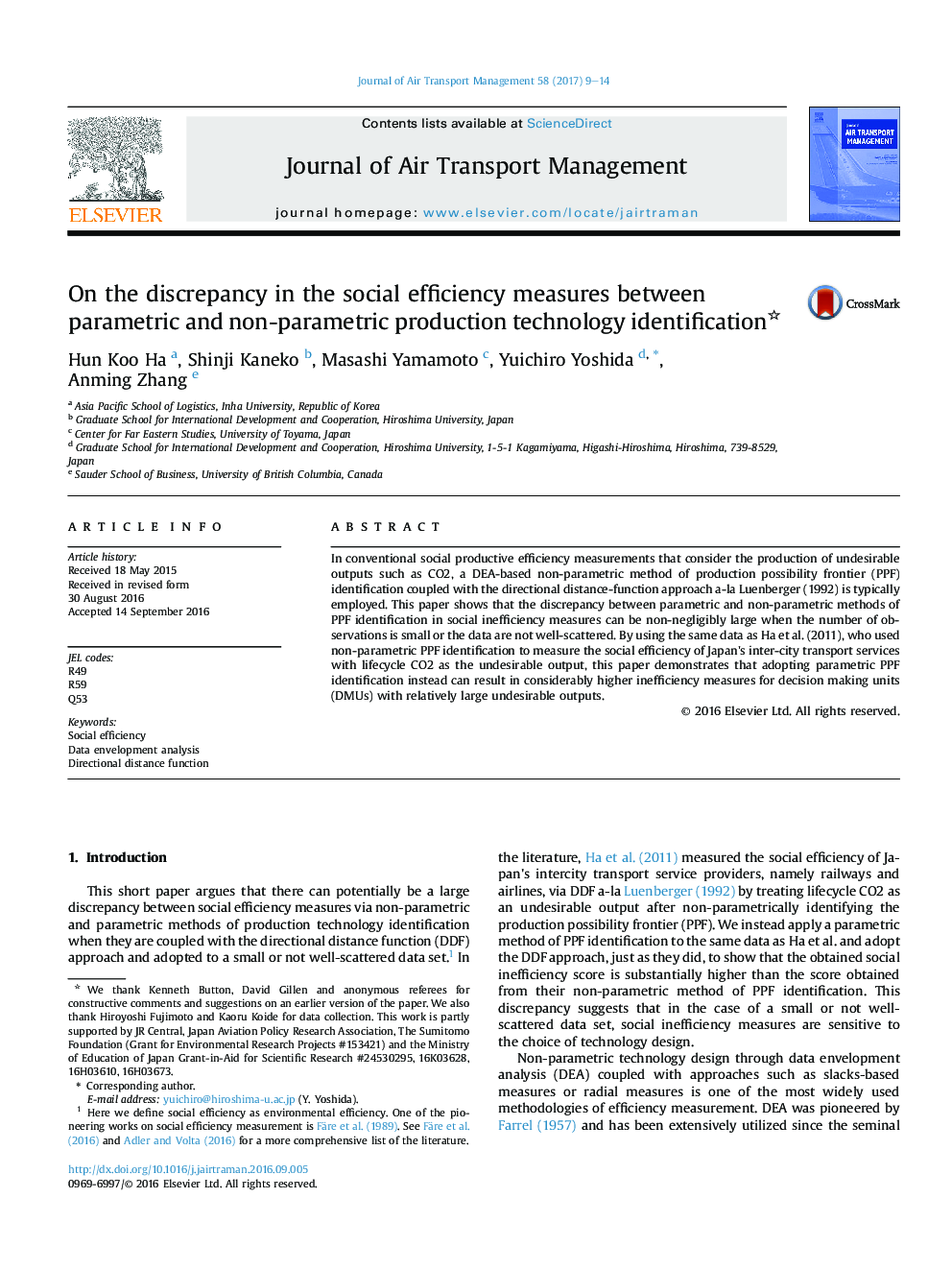| Article ID | Journal | Published Year | Pages | File Type |
|---|---|---|---|---|
| 5111586 | Journal of Air Transport Management | 2017 | 6 Pages |
Abstract
In conventional social productive efficiency measurements that consider the production of undesirable outputs such as CO2, a DEA-based non-parametric method of production possibility frontier (PPF) identification coupled with the directional distance-function approach a-la Luenberger (1992) is typically employed. This paper shows that the discrepancy between parametric and non-parametric methods of PPF identification in social inefficiency measures can be non-negligibly large when the number of observations is small or the data are not well-scattered. By using the same data as Ha et al. (2011), who used non-parametric PPF identification to measure the social efficiency of Japan's inter-city transport services with lifecycle CO2 as the undesirable output, this paper demonstrates that adopting parametric PPF identification instead can result in considerably higher inefficiency measures for decision making units (DMUs) with relatively large undesirable outputs.
Related Topics
Social Sciences and Humanities
Business, Management and Accounting
Strategy and Management
Authors
Hun Koo Ha, Shinji Kaneko, Masashi Yamamoto, Yuichiro Yoshida, Anming Zhang,
